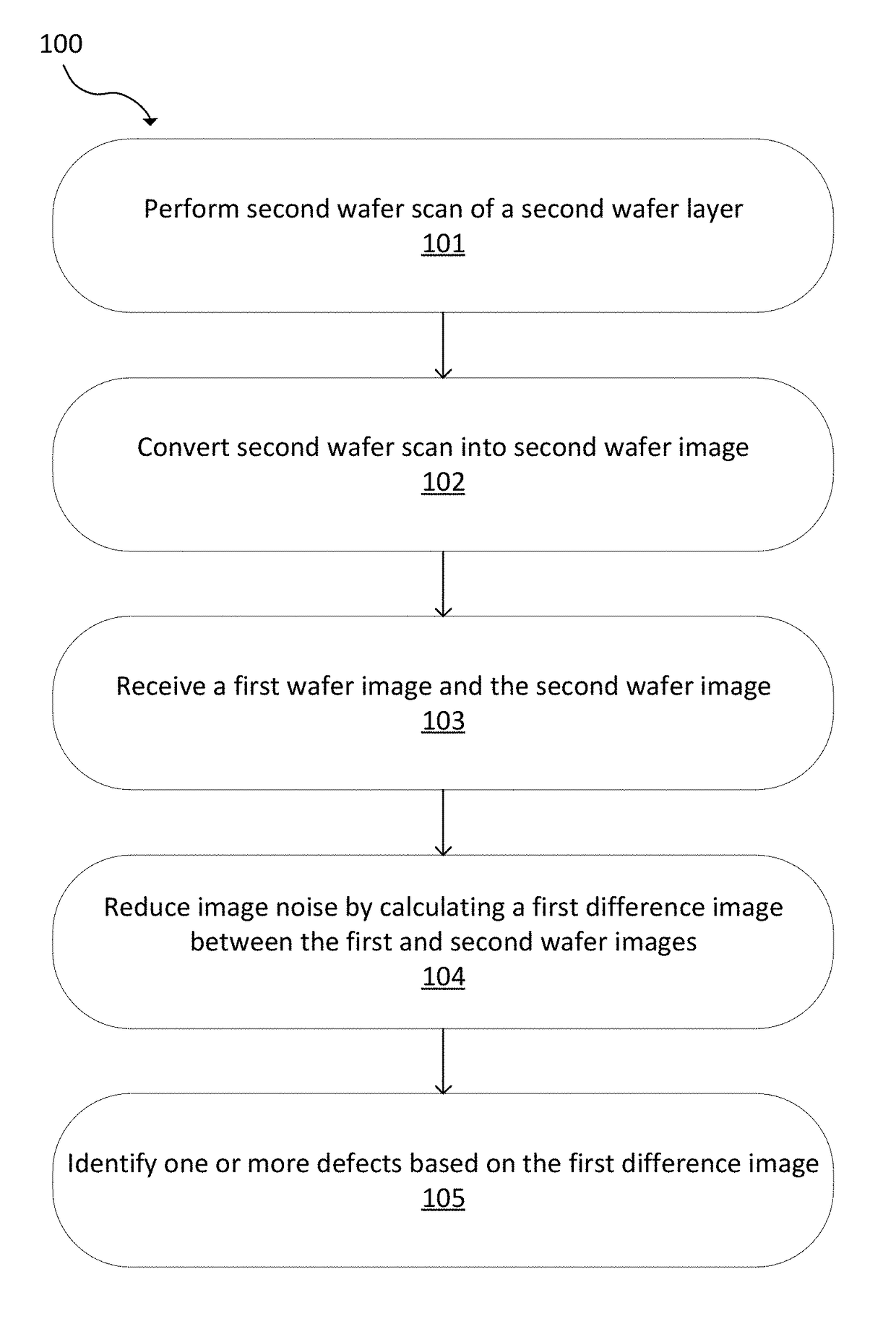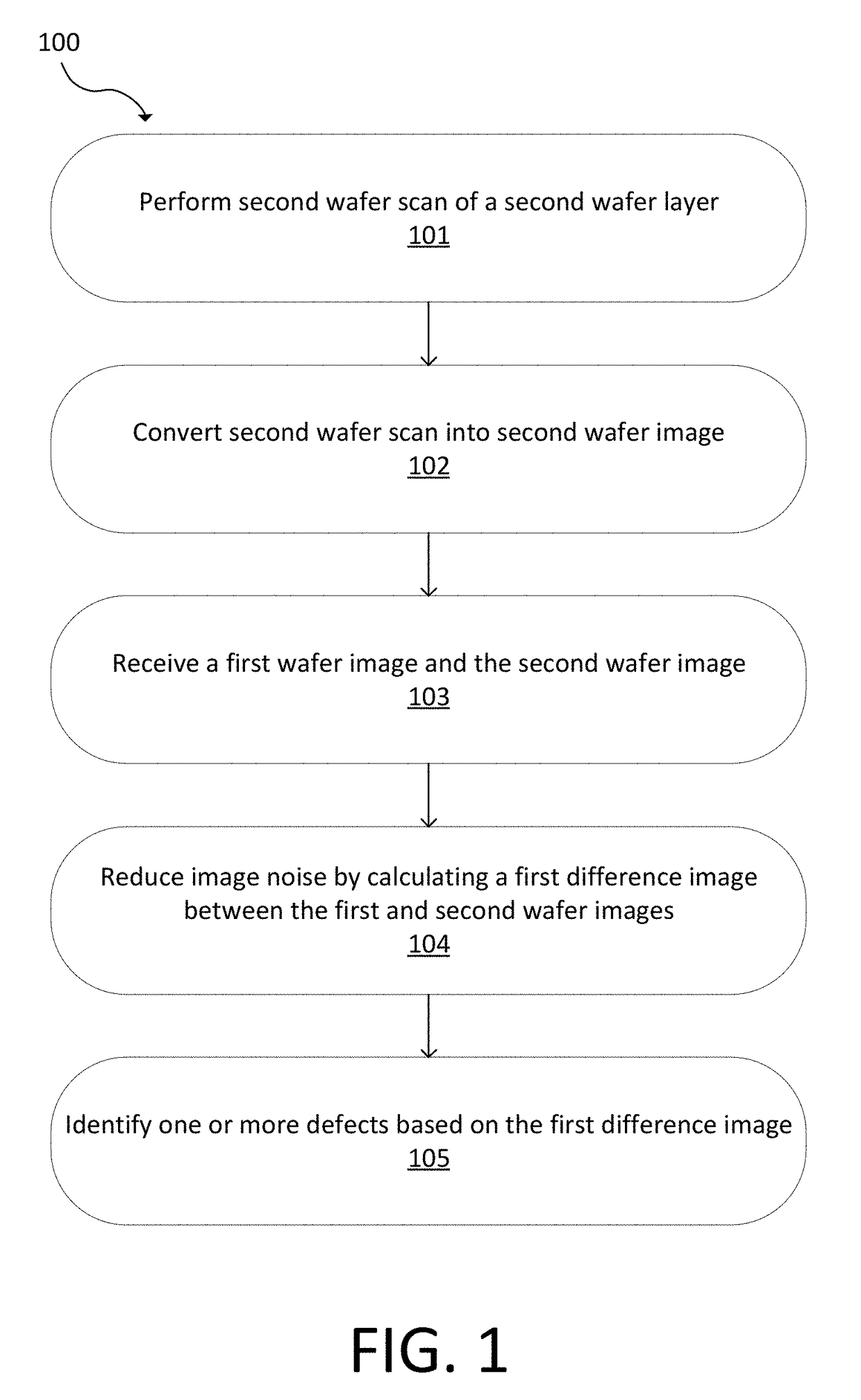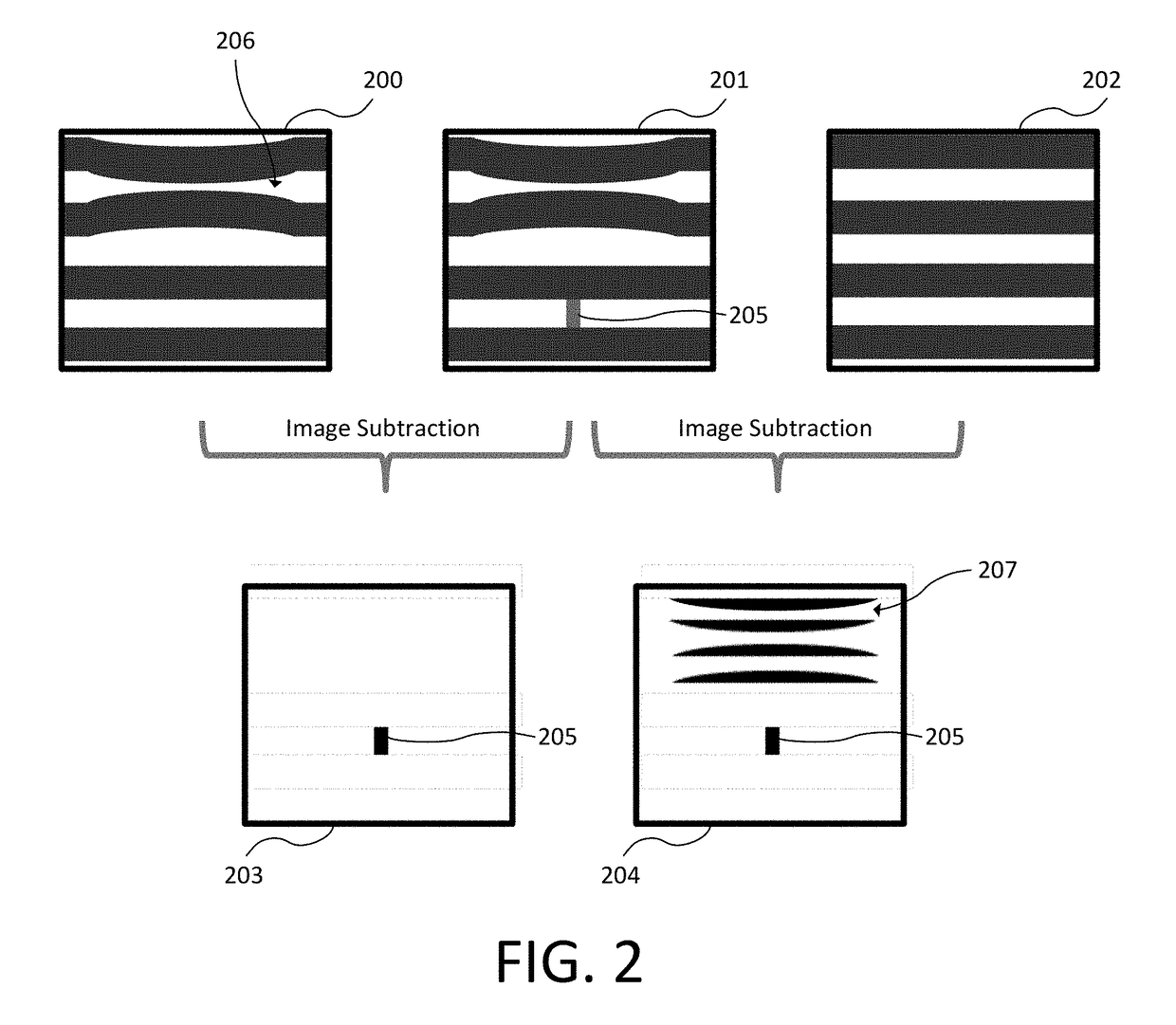Wafer noise reduction by image subtraction across layers
a layer and image technology, applied in image enhancement, semiconductor/solid-state device testing/measurement, instruments, etc., can solve the problems of reducing the size of defects, the operation of semiconductor manufacturing processes closer to the limitation of process performance capability, and the impact of smaller defects on the electrical parameters of the device, so as to achieve noise reduction and image noise reduction
- Summary
- Abstract
- Description
- Claims
- Application Information
AI Technical Summary
Benefits of technology
Problems solved by technology
Method used
Image
Examples
Embodiment Construction
[0026]Although claimed subject matter will be described in terms of certain embodiments, other embodiments, including embodiments that do not provide all of the benefits and features set forth herein, are also within the scope of this disclosure. Various structural, logical, process step, and electronic changes may be made without departing from the scope of the disclosure. Accordingly, the scope of the disclosure is defined only by reference to the appended claims.
[0027]Embodiments of the methods and systems disclosed herein provide noise reduction in a difference image of an optical inspection tool by calculating a difference image across layers of a multi-layered wafer. Detection of defects that previously were buried in the noise floor (e.g., that have a signal to noise ratio that is generally too low for detection) is enabled. This can improve defect detection results for semiconductor manufacturers and increase throughput. In particular, pattern related defects such as missing...
PUM
 Login to View More
Login to View More Abstract
Description
Claims
Application Information
 Login to View More
Login to View More - R&D
- Intellectual Property
- Life Sciences
- Materials
- Tech Scout
- Unparalleled Data Quality
- Higher Quality Content
- 60% Fewer Hallucinations
Browse by: Latest US Patents, China's latest patents, Technical Efficacy Thesaurus, Application Domain, Technology Topic, Popular Technical Reports.
© 2025 PatSnap. All rights reserved.Legal|Privacy policy|Modern Slavery Act Transparency Statement|Sitemap|About US| Contact US: help@patsnap.com



